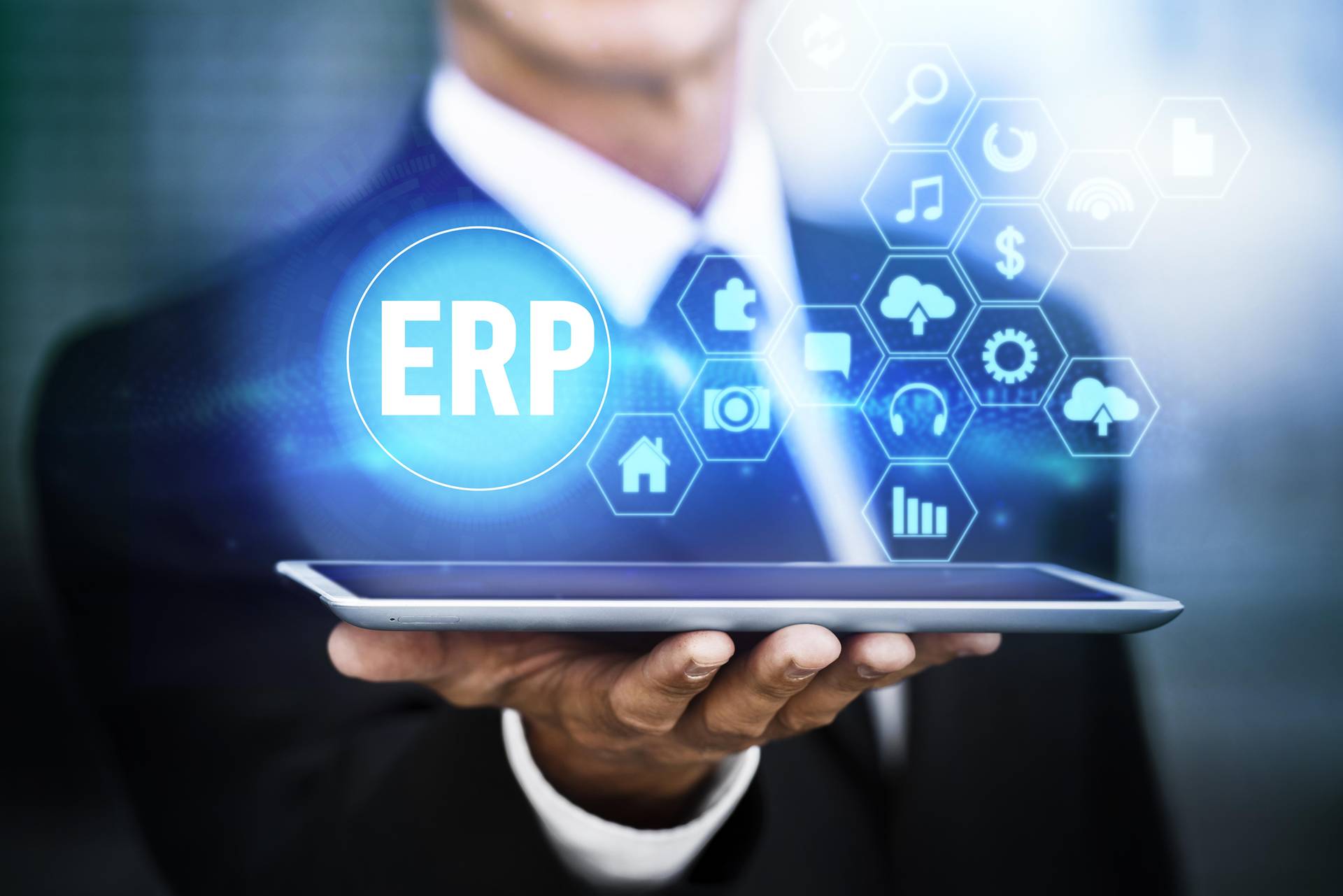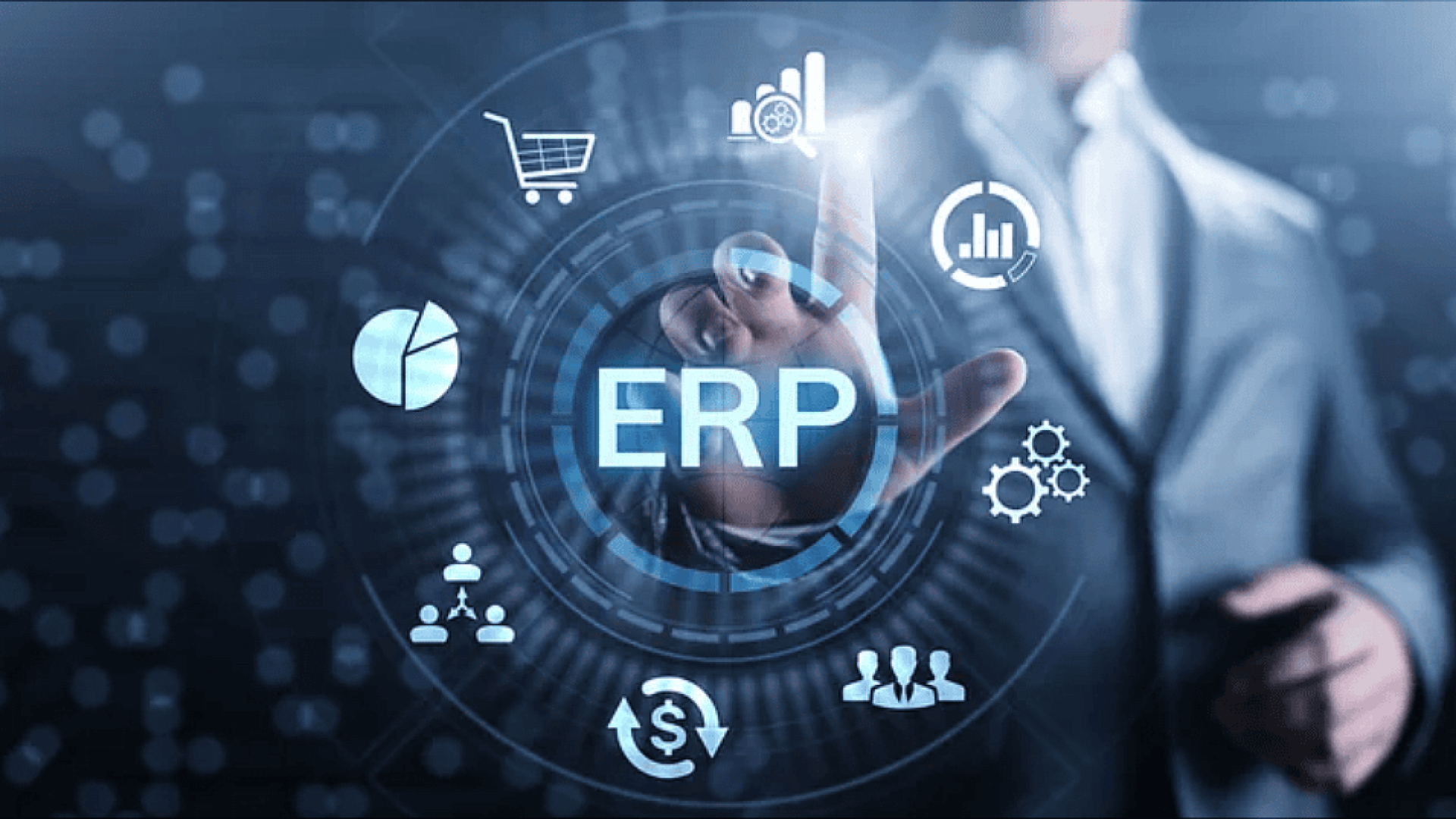Running a business in today's reality requires not only flexibility, but also quick response to changing market conditions. Financial management, warehouse, sales, human resources - these are just some of the areas that must operate efficiently and coherently. That is why more and more small and medium-sized enterprises decide to implement modern ERP (Enterprise Resource Planning) systems.
Of particular interest are: ERP systems in the cloud, which combine the functionality of classic business management software with the convenience and flexibility of the cloud model. Such solutions enable access to data from anywhere, reduce infrastructure costs and allow you to develop your business without technological limitations.
In this article, we will show you what exactly it is cloud ERP system, what benefits it brings, how to prepare the company for its implementation and which solutions are particularly worth considering for small and medium-sized enterprises. Regardless of whether you are just considering digitizing your business or are already actively looking for the best solution - you will find specific and useful information here.

What is an ERP system and why do companies need it?
ERP system (Enterprise Resource Planning), or enterprise resource planning system, is an integrated software supporting the management of the most important processes in the company - from finance and accounting, through warehouse and logistics, to sales, production and human resources. Its main goal is improving the flow of information between departments and ensuring full control over what is happening in the enterprise – in real time.
How does an ERP system work?
Imagine that each person in the company uses a different program for their work – accounting from one, the warehouse from another, and the sales department from a third. Such a solution quickly leads to chaos, data discrepancies and loss of time. The ERP system solves this problem, combining all key business areas into one coherent platform.
Data entered in one department is immediately visible to others – without the need for manual transmission of information, without errors and delays. Example? Entering a new purchase invoice by the accounting department can automatically update the inventory and cost data in the logistics department.
Why is it worth implementing an ERP system?
1. Data consistency and reporting
ERP eliminates the problem of duplicate information and inconsistent data. Everything is in one system, so reports are reliable and business decisions are made based on reliable information.
2. Saving time and reducing errors
Automating everyday processes (e.g. invoicing, delivery planning, accounting) reduces errors and allows employees to focus on higher-value activities.
3. Increased operational efficiency
Thanks to central management of all departments, the company can operate faster, more efficiently and with greater control over costs.
4. Scalability and preparation for growth
The ERP system grows with the company – it can be expanded with additional modules, users and functions as the business develops.
Who is ERP for?
The ERP system is no longer a solution only for large corporations. Availability of cloud versions and flexible subscription models have made it possible for small and medium-sized companies to use this technology without incurring huge costs.
A well-chosen ERP system helps to organize the company, speed up operations and prepare it for further development. In the following part of the article we will show why it is worth choosing ERP system in the cloud and what benefits this solution brings to your business.
ERP in the Cloud vs. Traditional On-Premises System
When choosing an ERP system for a company, one of the key dilemmas is the decision: cloud or on-premise solution? Both options have their advantages, but for small and medium-sized businesses, the cloud model is increasingly proving to be more accessible, flexible, and future-proof.
What is the difference between ERP in the cloud and on-premises?
• ERP on-premise is a traditional solution installed on servers at the company's headquarters. It requires its own IT infrastructure and responsibility for maintenance, updates and security.
• ERP in the cloud (Cloud ERP) works as an online service – no need to buy hardware or install software locally. All you need is a web browser and a network connection.
Both models offer similar functionalities (financial, warehouse, sales, human resources management), but differ in terms of implementation, costs and scalability.
Comparison Table – ERP in the Cloud vs. On-Premises
| Characteristic | ERP in the Cloud (Cloud) | ERP local (On-premise) |
|---|---|---|
| Initial costs | Low – subscription model (SaaS) | High – purchase of licenses, servers |
| Maintenance | At the discretion of the supplier | Requires its own IT department |
| Availability | From anywhere (online) | Only local or via VPN |
| System updates | Automatic and regular | Manual, often additionally paid |
| Data security | Professional data centers (encryption, backups) | In the hands of the company, more responsibility |
| Scalability | Very easy – add users and modules as needed | Limited by hardware capabilities |
| Implementation time | Short – even in a few days | Long – from several weeks to months |
For most small and medium-sized businesses the ERP system in the cloud is a more accessible and economical solution. It does not require investment in IT infrastructure, and all updates and security are on the provider's side. What's more, the subscription model allows for better planning of operating costs and does not involve a large start-up expense.
An additional advantage is easy integration with other cloud services, such as Microsoft 365, Google Workspace or e-commerce platforms. This is important in an environment where more and more business processes take place online and in a hybrid model.
Does a local solution still make sense?
Yes, although mainly in specific cases:
• companies with very high requirements regarding data control,
• organizations with their own IT facilities and server rooms,
• industries with restrictive internal regulations.
However, for the vast majority of small and medium-sized enterprises, ERP in the cloud will be more cost-effective, faster to implement and easier to maintain.

Benefits of implementing an ERP system in the cloud
The decision to implement an ERP system in a company is a significant step – it requires preparation, investment and team involvement. That is why it is worth knowing, what exactly does a company gain by choosing a cloud ERP solution. These advantages are many – from cost savings, through the convenience of remote work, to improved security and scalability of operations.
Below we present the most important benefits that make it ERP system in the cloud becomes a natural choice for small and medium-sized businesses.
1. Lower implementation and maintenance costs
Traditional ERP system requires investment in servers, licenses, infrastructure and IT team. In cloud model – you don't have to buy your own hardware or software. Everything works on a subscription model (SaaS), where the company pays only for what it actually uses.
• no costs of purchasing and maintaining servers,
• no fees for manual updates and maintenance,
• ability to flexibly increase or decrease the number of users.
2. Easy access to the system from anywhere
In the era of remote work and mobile teams, the ability to access company data from anywhere (office, home, business trip) becomes crucial. All you need is a computer, tablet or phone with internet access – no VPN, remote desktop or special configurations needed.
This is a great convenience for:
• management staff (monitoring results in real time),
• mobile workers (e.g. salespeople),
• teams working in different locations.
3. Data security at the highest level
For many companies, security is the main argument against the cloud. Meanwhile, ERP SaaS providers are investing huge amounts of money in professional data centersthat meet international standards (e.g. ISO, SOC 2, GDPR).
• data encryption,
• automatic backups,
• physical and digital protection of servers,
• continuous monitoring and rapid response to incidents.
This often means higher level of protection than local systems, which do not have the resources for equally advanced security.
4. Automatic updates and compliance
ERP systems in the cloud are updated automatically – without the need to manually upload new versions or stop the team's work.
• Have the regulations changed? The system will adapt.
• New feature in the system? You get it at no extra cost.
• Changes to your VAT invoice? You have them immediately.
This means that the company always works with the latest, compliant tool – without the risk of something becoming “obsolete” overnight.
5. Scalability and development without limits
Companies are growing. In the cloud model, ERP can grow with them:
• you add more users,
• you expand the system with new modules (e.g. e-commerce, CRM, production),
• you integrate ERP with other tools (e.g. online store, HR system).
Thanks to this you don't have to replace the system every few years – it just needs to be expanded. This is key for companies that think long-term.
6. Performance and stability of operation
Cloud ERP runs in data centers optimized for speed and reliability. This means:
• fast loading of reports and data,
• no downtime due to server failures,
• automatic resolution of technical problems by the supplier.
The benefits of implementing ERP in the cloud are real and measurable. This solution is not only modern, but also practical – especially for companies that want organize your processes, operate efficiently and develop without technological limitations.
In the next chapter, we will show you how to prepare your company for ERP implementation in a structured and stress-free manner.

How to prepare your company for ERP implementation
Implementing an ERP system is one of the most important moments in a company's development. Although it is often associated with a large IT project, well-executed ERP implementation in a small or medium-sized company It doesn’t have to be complicated or burdensome. The key is proper preparation – both organizational and mental.
Understanding the needs of the company
The first step is to thoroughly analyze your current processes – it’s worth asking yourself: why we want to implement an ERP system and what do we want to achieve with it? Do we mainly care about better financial control? Or maybe we want to automate warehouse and sales management? Every company has different needs, so there is no one-size-fits-all solution.
A good practice is to prepare a so-called process map, i.e. a graphical representation of how key activities in the company proceed - from accepting an order to its implementation and settlement. Such an analysis allows for better matching of the functionalities of the ERP system in the cloud to the real needs of the organization.
Selection of the team responsible for implementation
Although an external provider (e.g. an IT company such as ProsteIT) will help you through the entire process, the company should appoint its own implementation team, who will be responsible for communication, testing and training. In small companies, 2-3 people are often enough – e.g. the owner, a person responsible for finance and someone from the operations department.
Importantly, people involved in the project should understand how business processes work, but also be open to change. An ERP system not only organizes a company – it sometimes changes it.
Planning implementation stages
ERP implementation in the cloud is a process that should be divided into stages. Too fast implementation “all at once” often ends in chaos or a drop in efficiency. Most often, the process looks like this:
Analysis and design – defining requirements, selecting modules, preparing the environment.
Data migration – transferring data from existing systems or Excel sheets.
Configuration and integrations – system settings, connections with other tools.
Tests – checking correct operation and work simulation.
User training – a very important and often overlooked stage.
Production start – launching the system in the company’s daily operations.
Support and development – ongoing consulting, developing the system together with the company.
The duration of the entire implementation depends on the size of the company and the number of modules, but for SMEs it can take a few weeks.
Employee training – the foundation of success
Even the best ERP system will not bring results if the team does not know how to use it. That is why training is a key element in preparing the company for implementation. A good practice is to start with the so-called super users (i.e. people who will support other employees in their daily work).
Training should be practical and tailored to the specifics of the positions – a warehouse worker will have different needs, an accountant will have different needs, and a production manager will have different needs.
The role of the implementation partner
At the preparation stage, cooperation with an experienced person is extremely important. IT partner, who will not only provide a solution, but will help to adapt it to the company's realities. A good partner:
• will conduct process analysis,
• advise on choosing the best ERP system in the cloud,
• will help with configuration and testing,
• provide training and support after implementation.
Choosing an implementation company is a strategic decision – it is worth choosing a partner who knows the specifics of SMEs and understands that it is not only the technology that counts, but also the way it is implemented.
Well thought out and well planned preparation makes ERP implementation in a small company runs smoothly, without downtime and unnecessary stress. In the next chapter, we’ll show you specific ERP systems worth considering – along with their features, advantages, and disadvantages.

Overview of popular ERP systems for SMEs
Choosing the right ERP system may seem difficult – the market offers dozens of solutions, differing in functionality, price, implementation method and technical support. For small and medium-sized companies, three things are key: adaptation to the specific nature of the business, Affordability and ease of implementation and operation.
Below we present 5 popular ERP systems available in the cloud, which work well in the SME environment. Each of them has its strengths and specific target groups.
1. enova365 – flexible software for companies of all sizes
enova365 this Polish ERP system, which has gained great popularity due to its flexibility and extensive functionality. It works both in the stationary version and in the cloud - which gives companies a choice of the form of implementation.
✔ Advantages:
• Wide range of modules: accounting, HR and payroll, trade, warehouse, CRM, production.
• Ability to adapt the interface to the user's role.
• Intuitive management panel – also in the web version.
• Regular updates in line with regulations (e.g. VAT, JPK, PPK).
• Support of local implementation partners.
✖ Limitations:
• For very small companies it may be too complex.
• Implementation time depends on the number of modules selected.
For whom?
For companies that are looking for a comprehensive solution with development options, but at the same time value support in Polish and compliance with national regulations.
2. Comarch ERP XT and Optima – practical systems for micro and small companies
Comarch ERP XT is a tool dedicated to the smallest businesses – freelancers, sole proprietorships or micro-enterprises. In turn, Comarch ERP Optima it's more advanced solution, popular among accounting offices and small service companies.
✔ Advantages:
• ERP XT available completely online – perfect for a start.
• Mobile versions – applications for Android and iOS.
• Integration with e-shops, Allegro, PUE ZUS, GUS.
• Possibility to upgrade from ERP XT to Optima as your company grows.
• Affordable subscription price.
✖ Limitations:
• ERP XT has limited functionality (no production, advanced logistics).
• ERP Optima requires more configuration and may be less intuitive.
For whom?
For micro and small companies looking for low-cost and simple ERP implementation in the cloud, especially in the service and trade industries.
3. Microsoft Dynamics 365 Business Central – a well-known tool in a modern edition
Business Central this is part Microsoft 365 ecosystem, which makes it an attractive choice for companies already using tools such as Outlook, Excel or Teams. The system works entirely in the cloud, in the SaaS model.
✔ Advantages:
• Great integration with Microsoft 365 and PowerBI.
• Availability on any device – modern interface.
• Possibility of expansion with CRM, warehouse, production, projects functions.
• High level of security and Microsoft support.
• Extensive API for integration with external systems.
✖ Limitations:
• Implementation and maintenance can be expensive for very small companies.
• Requires cooperation with a certified implementation partner.
For whom?
For companies that operate dynamically, use Microsoft solutions and need a scalable system Highly integrated cloud ERP.
4. SAP Business One Cloud – prestige in a version available for SMEs
SAP Business One is a version of the well-known SAP system, designed for small and medium-sized businesses. It also works in the cloud and offers functionality comparable to larger solutions.
✔ Advantages:
• Very good management of finances, inventory, sales and customer relations.
• Modular design – you implement only what you need.
• Reliability of the SAP brand – stability and development.
• Possibility to run multiple companies and currencies.
✖ Limitations:
• High price for Polish conditions.
• Long implementation time, requires user training.
For whom?
For medium-sized companies or small organizations with aspirations of international development that are looking for a prestigious and advanced ERP solution.
5. Odoo – flexible open source with powerful capabilities
Odoo it's open source ERP system, which has gained popularity due to its high flexibility and low initial costs. It is also available in the cloud model, as a ready-made SaaS solution.
✔ Advantages:
• A huge number of modules: CRM, invoicing, production, warehouse, e-commerce.
• Affordable price – free basic version.
• Full personalization possible.
• Large community and support from independent implementers.
✖ Limitations:
• Requires a good IT partner for implementation and modification.
• The interface and documentation are mainly in English.
For whom?
For companies that want great possibilities without high licensing costs, and have access to an IT partner who will help implement and maintain the system.
| ERP system | The biggest advantage | Perfect for… |
|---|---|---|
| enova365 | Flexibility and local support | Small and medium-sized companies in Poland |
| Comarch ERP XT | Simple implementation and low price | Micro and sole proprietorships |
| Dynamics365 | Microsoft 365 Integration | Service, trade and hybrid companies |
| SAP B1 Cloud | SAP's stability and prestige | Medium-sized companies with expansion plans |
| Odoo | Flexibility and open source | Technical companies, startups, e-commerce |
Choosing the right ERP system depends on many factors: industry, budget, development plans, and the team's readiness for change. It is worth taking the time to talk to an implementation partner who will help match the tool not only to the company but also to the people who will use it.

The Most Common Mistakes and Concerns When Implementing ERP in the Cloud
Implementing an ERP system – even in the cloud – is a project that requires preparation and commitment. Despite the numerous advantages, many companies (especially those that have not used similar solutions before) feel uncertain. In this chapter, we discuss the most common mistakes and fearsthat small and medium-sized enterprises face when implementing a cloud ERP system – and how to prevent them.
1. Concerns about data security in the cloud
This is probably the most common reason for hesitation. Many companies wonder: Will my data be safe if it is not “on site”? Meanwhile, the facts are different – modern ERP solutions in the cloud are often safer than local systems, Because:
• data is stored in data centers that meet international security standards (e.g. ISO/IEC 27001),
• advanced encryption, access control and backup mechanisms are used,
• the system provider is responsible for security updates and incident monitoring.
In fact, many on-premises ERP systems are more vulnerable to attacks because they are not properly maintained.
2. Insufficient preparation of the team
ERP implementation is not only a matter of technology – it is also a change in the way of working. Lack of employee involvement or inadequate training may lead to resistance, errors in operating the system or underutilization of its capabilities.
Most common problems:
• reluctance to change habits,
• lack of understanding of the purpose of the implementation,
• frustration with the new interface.
Solution? Training, Communication and Support. Employees should know why the system is being implemented and how it will make their daily work easier. It is worth engaging "change ambassadors" - people who will test the system early and help others.
3. Implementing the ERP system “too fast”
Some companies decide to implement the entire ERP system in a very short time – wanting to have everything ready “right away”. Unfortunately, this approach often leads to mistakes:
• ill-considered data structure,
• errors in migrating information from previous tools (e.g. Excel),
• omission of important processes or integrations.
A much better approach is phased implementation, starting with key areas (e.g. invoicing, warehouse, sales), and only then expanding with additional modules. This allows for calm testing of the system and adaptation of the team.
4. Choosing a system that is too complicated
Sometimes companies decide on a tool that is technically advanced but completely unnecessary at their level of development. This is a common mistake, especially among smaller companies that implement solutions for large corporations - and then feel overwhelmed.
How to prevent this?
• To choose ERP system adapted to the scale of business.
• Use the help of an implementation partner who can advise on a rational approach.
• Think modularly – implement what is really needed at the beginning, leave the rest for later.
5. Fear of "losing control" of the system
In the cloud model, the system is located outside the company's infrastructure - which raises concerns about whether the company owner will still have full control over it. In practice, the user has full access to data, permissions, reports and configuration, and the limitations result solely from the agreement with the system provider.
However, it is worth taking care of:
• clear SLA terms (availability guarantee, response time),
• access to the administration panel with control over users and data,
• ability to export data (e.g. as an offline backup).
6. Lack of a clearly defined implementation goal
It happens that companies decide on ERP "because others are doing it", without a clear plan. This results in frustration and disappointment, because the system does not solve specific problems - it only creates new ones.
That is why every implementation should start with defining business goals: Do we want to control costs better? Shorten delivery times? Have insight into sales results in real time? Such goals should be measurable and realistic – then it is easy to assess whether the system is actually bringing benefits.
Fears related to ERP in the cloud are natural – but most of them result from a lack of information or experience. A well-prepared company, aware of its needs and open to changes, has a very good chance of successful and effective implementation of the ERP system, which will translate into a real increase in efficiency and order in key areas of activity.
The ERP system in the cloud is one of the most effective tools today that helps companies organize internal processes, automate everyday tasks and make better business decisions. Thanks to the SaaS model, even small companies can use solutions that were recently reserved for large corporations - without expensive infrastructure and complicated implementation.
As we have shown in this article, a well-selected and properly implemented ERP system:
• facilitates financial, warehouse, sales and human resources management,
• works flexibly and securely in a cloud environment,
• can grow with your business.
If you are thinking about implementing ERP, start with a needs analysis and then choose a solution that fits the scale and nature of your business. And if you need support – we will be happy to help you through this process step by step.
Contact the ProsteIT teamto talk about the opportunities that an ERP system can open up for your business.





